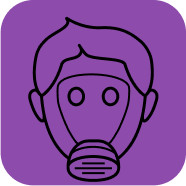Reach out to us through any of these channels
What is the air quality in Dubai today?
00
0
50
100
150
200
300
500
Everyone may begin to experience health effects.
Dominant Pollutant - p2
How is AQI measured?

0 - 50: Good, no risk for individuals

51 - 100: Moderate, acceptable quality

101 - 150: Unhealthy for sensitive groups

151 - 200: Unhealthy

201 - 300: Very unhealthy

301 - 500: Hazardous




